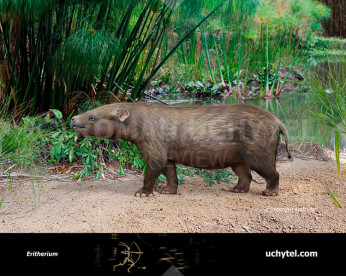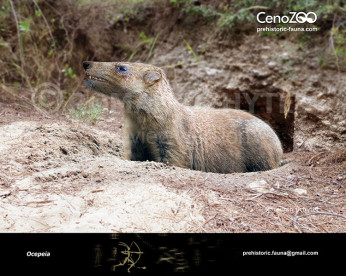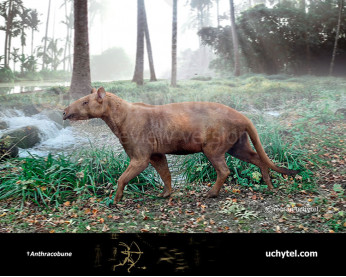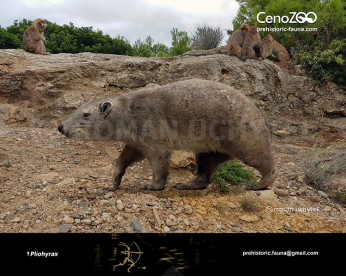Titanohyrax
448448Titanohyrax (†Titanohyrax (Matsumoto, 1922))
Order: Hyracoidea
Family: †Pliohyracidae
Time period: Early Eocene–early Oligocene (North Africa)
Size: 1,5 - 2 m in length, 90 - 130 cm in height, 23 - 600 kg of weight
largest representative: Titanohyrax ultimus (1000 kg of weight)
Titanohyrax is an extinct genus of large to very large hyrax from the Eocene and Oligocene. Specimens have been discovered in modern-day Algeria, Tunisia and Egypt. Some species, like T. ultimus, are estimated to be as large as a rhinoceros. Titanohyrax species are still poorly known due to their rarity in the fossil record.
Titanohyrax is unusual among the numerous Paleogene hyracoids by its lophoselenodont teeth (having teeth that are lophodont and selenodont, fully molariform premolars, and relatively high-crowned cheek teeth. This suggests the genus had a folivorous diet.
The genus was first described by in 1922 for the species T. ultimus from the early Oligocene of the Jebel Qatrani Formation, Fayum Depression, Egypt.The author described it as an “extremely gigantic species, being the largest of all the hyracoids hitherto known” - estimates of body mass range from 600-1300 kg. T. tantulus is the smallest Titanohyrax species known, with a body mass of around 23 kg.
Оплата
У Вас є кілька зручних способів купівлі зображення: кредитна чи дебетова картка Visa, Mastercard, Maestro; PayPal або банківський переказ
Titanohyrax (†Titanohyrax (Matsumoto, 1922))
Order: Hyracoidea
Family: †Pliohyracidae
Time period: Early Eocene–early Oligocene (North Africa)
Size: 1,5 - 2 m in length, 90 - 130 cm in height, 23 - 600 kg of weight
largest representative: Titanohyrax ultimus (1000 kg of weight)
Titanohyrax is an extinct genus of large to very large hyrax from the Eocene and Oligocene. Specimens have been discovered in modern-day Algeria, Tunisia and Egypt. Some species, like T. ultimus, are estimated to be as large as a rhinoceros. Titanohyrax species are still poorly known due to their rarity in the fossil record.
Titanohyrax is unusual among the numerous Paleogene hyracoids by its lophoselenodont teeth (having teeth that are lophodont and selenodont, fully molariform premolars, and relatively high-crowned cheek teeth. This suggests the genus had a folivorous diet.
The genus was first described by in 1922 for the species T. ultimus from the early Oligocene of the Jebel Qatrani Formation, Fayum Depression, Egypt.The author described it as an “extremely gigantic species, being the largest of all the hyracoids hitherto known” - estimates of body mass range from 600-1300 kg. T. tantulus is the smallest Titanohyrax species known, with a body mass of around 23 kg.

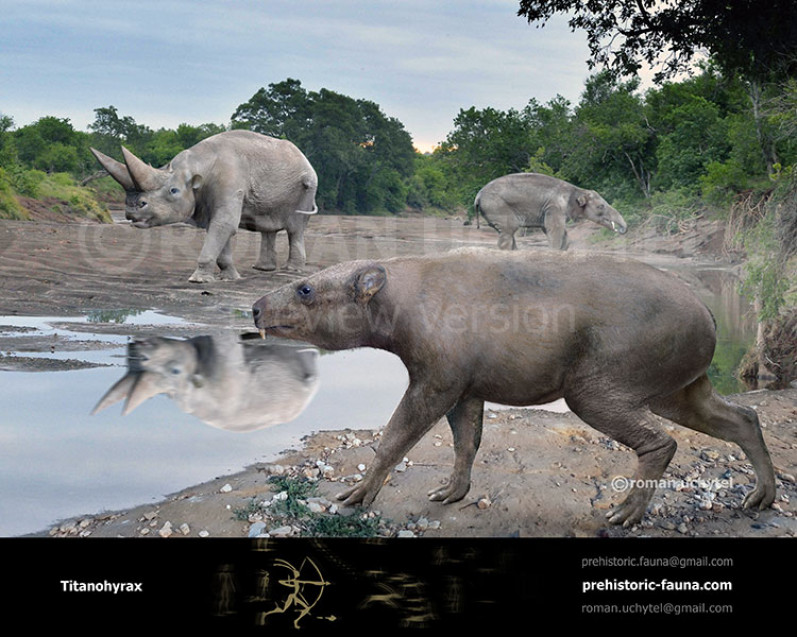
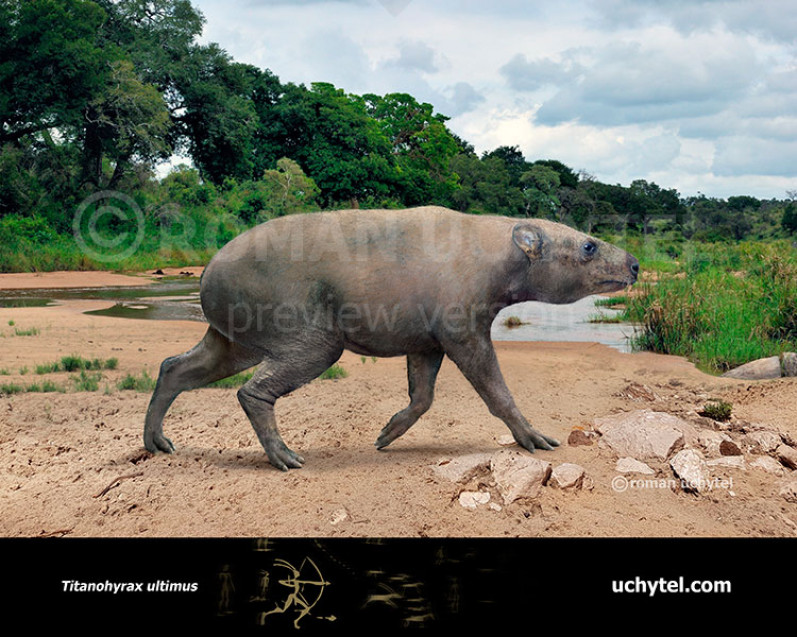
1-797x638.jpg)
2-797x638.jpg)


1-70x56.jpg)
2-70x56.jpg)
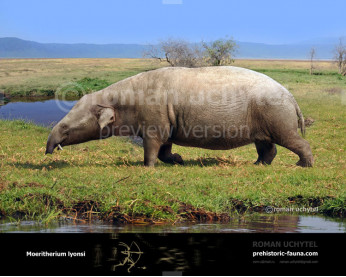
-346x277.jpg)
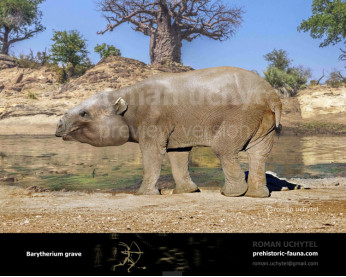
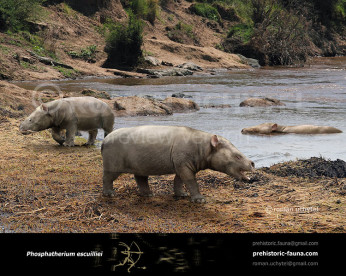
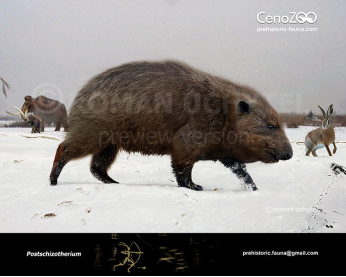
-346x277.jpg)
